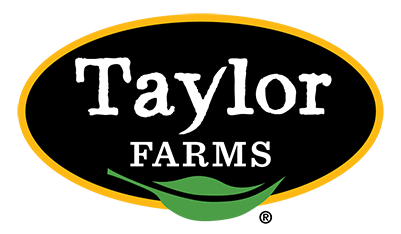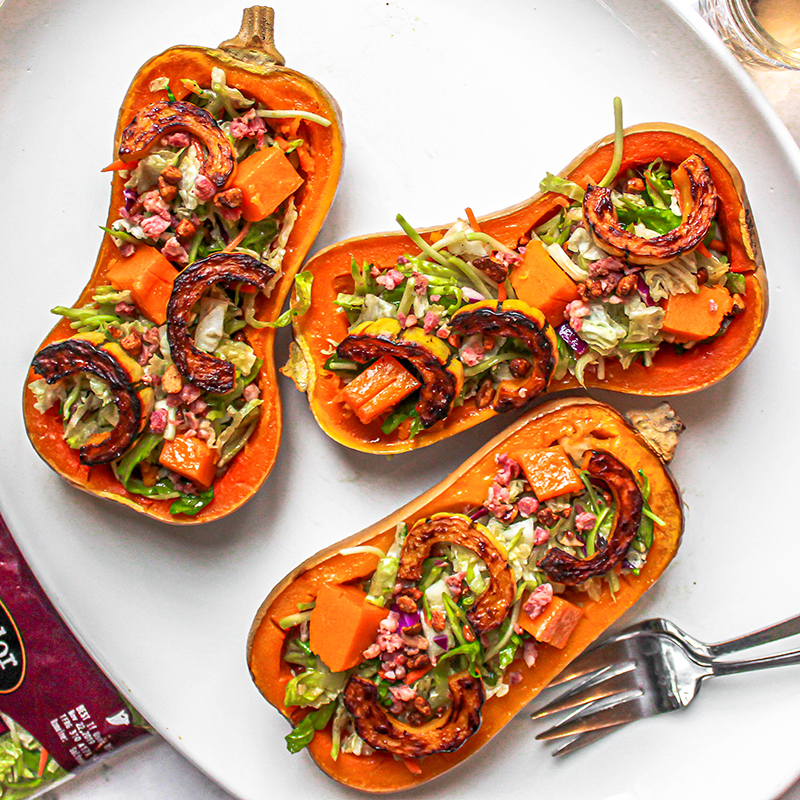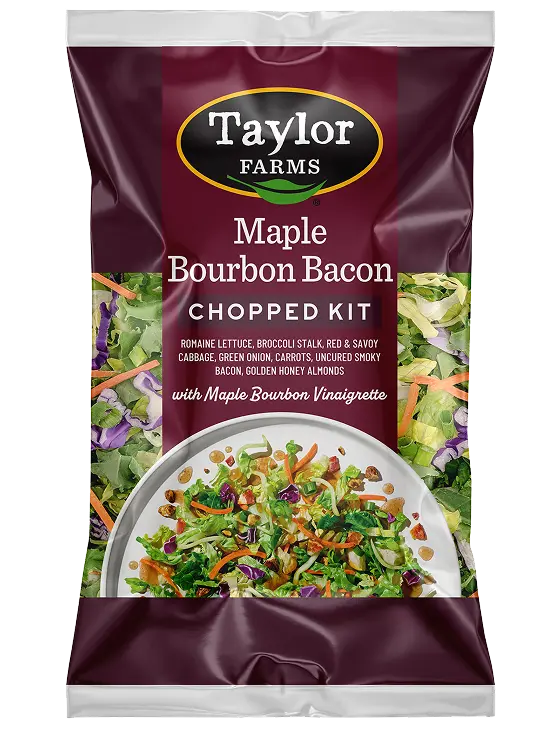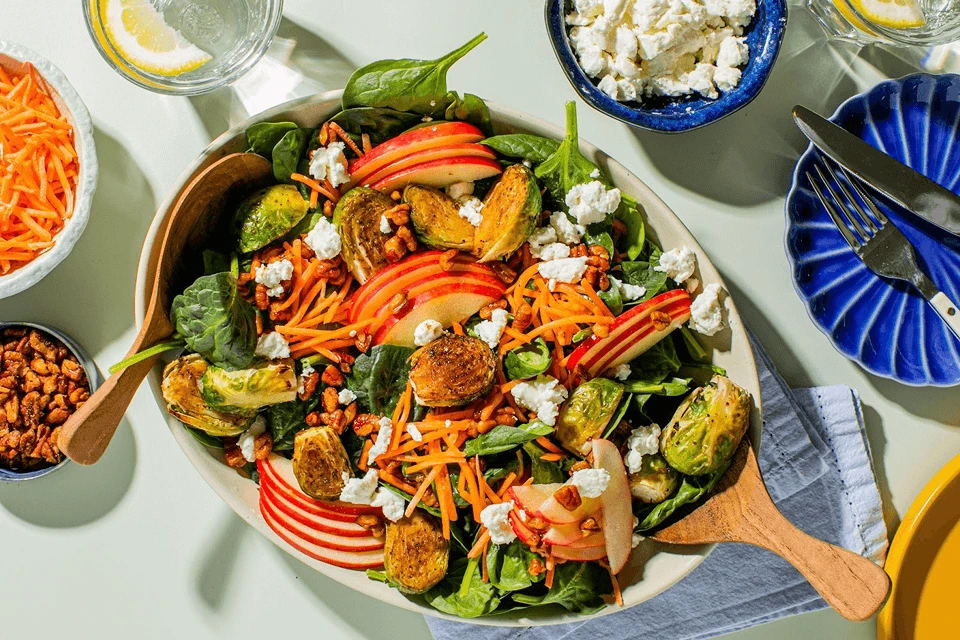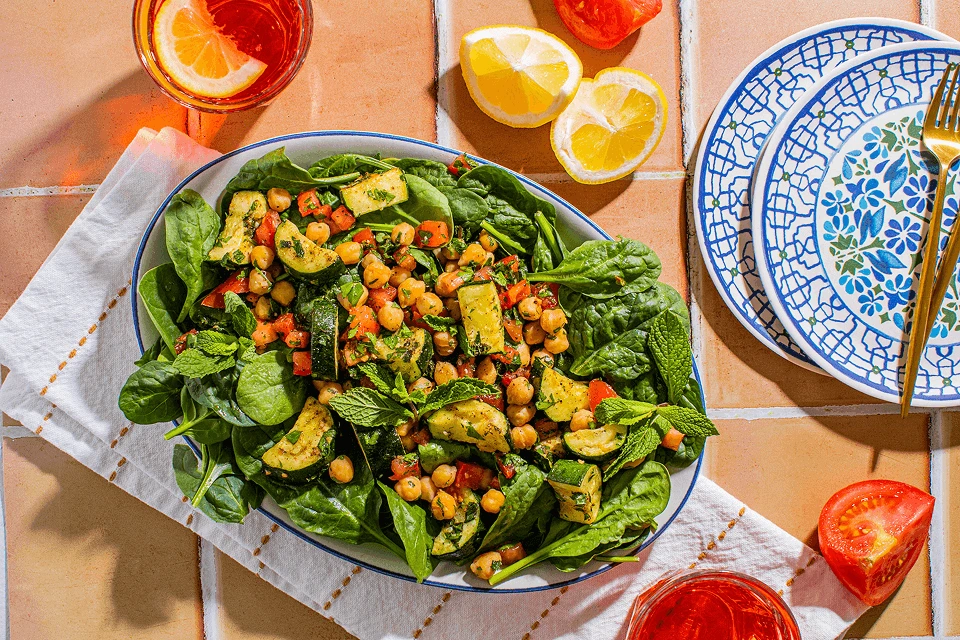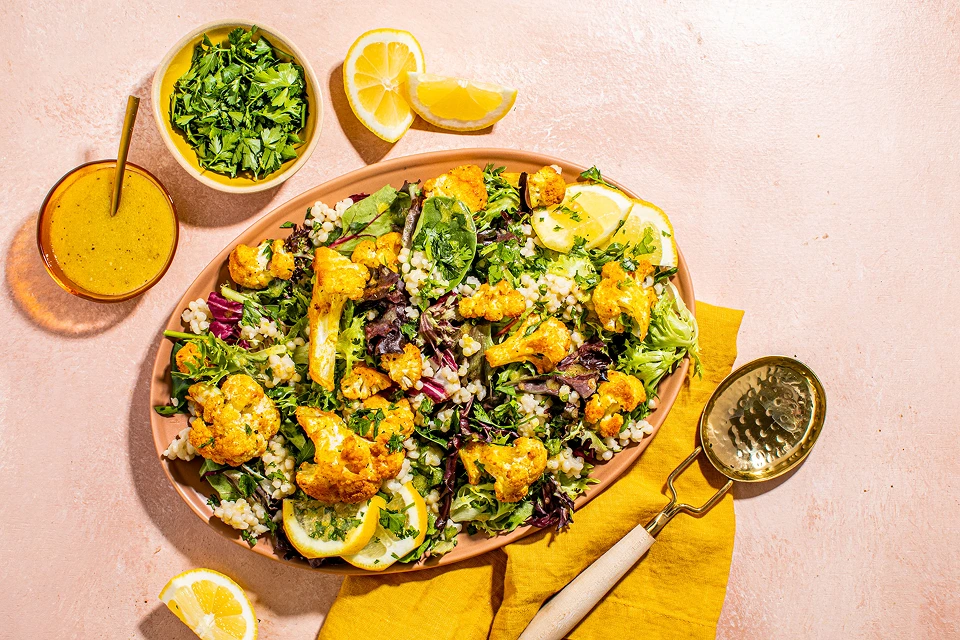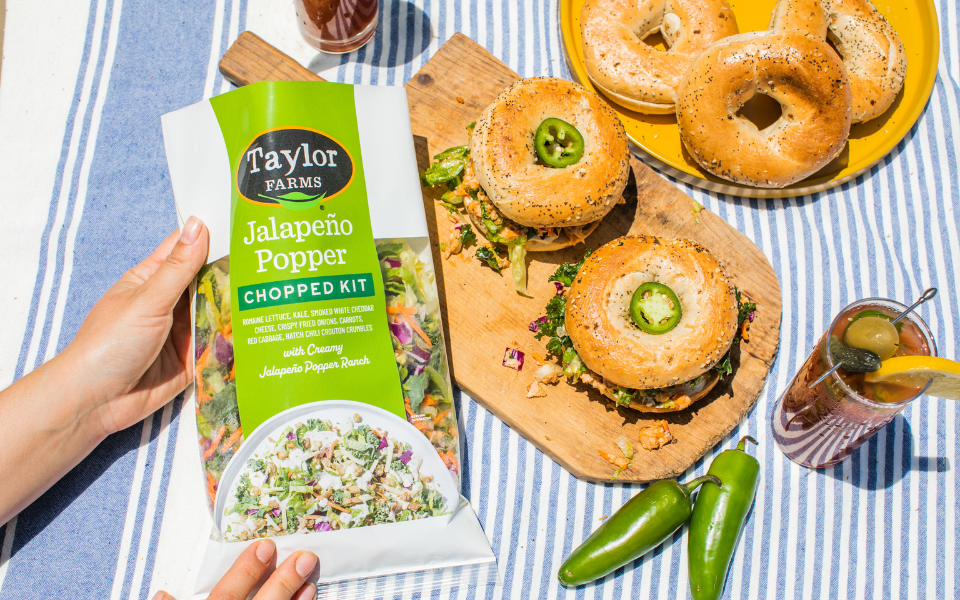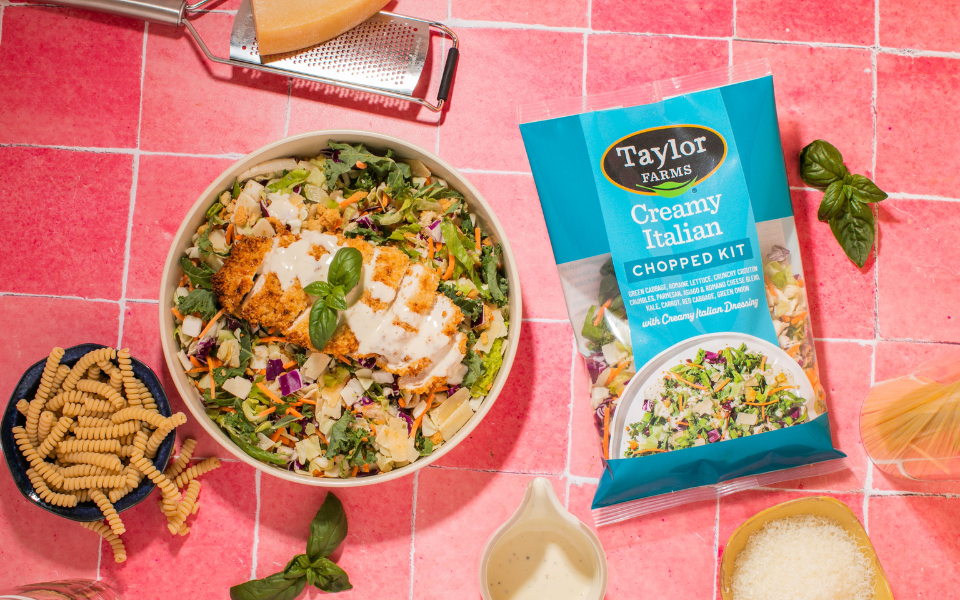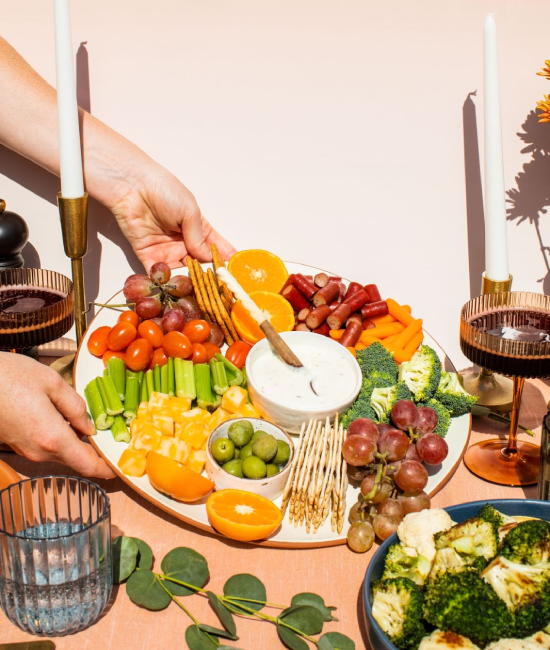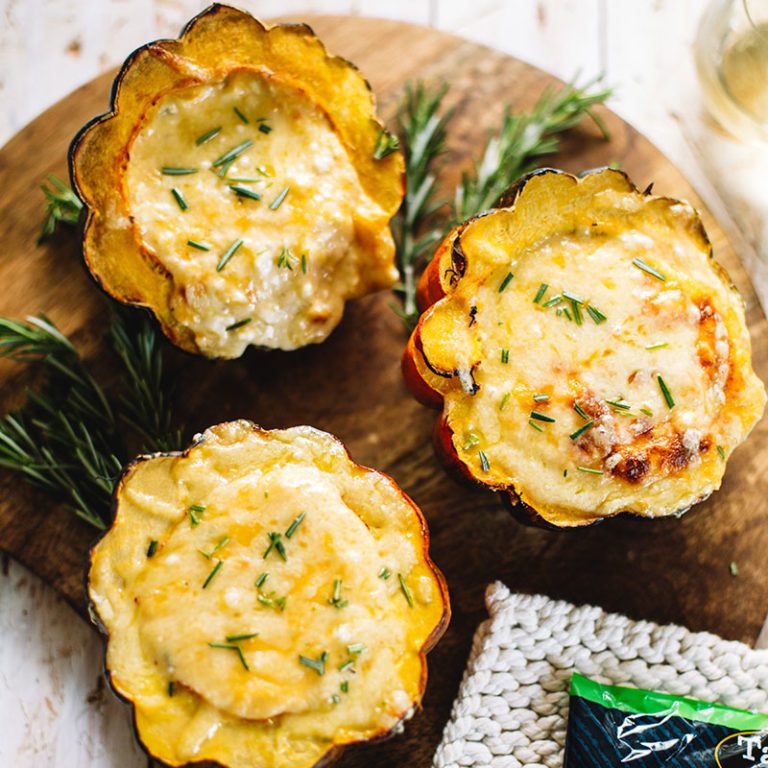- CREATED BY:
- Girl Meets Kitchen
Ingredients
- 1 Taylor Farms Maple Bourbon Bacon Chopped Salad Kit
- 2 butternut squashes, halved and seeded
- 1 delicata squash, halved, seeded, and cut into half moon shapes
- Extra virgin olive oil
- Kosher salt
- Cracked black pepper
Directions
- Preheat oven to 425 F
- After you’ve halved and seeded the butternut squash, run a sharp knife halfway through the squash in cross sections and drizzle each half with 1 tbsp. extra-virgin olive oil
- Place the squash skin side down on two baking sheets, add 1/2 cup of water onto the pan, cover loosely with foil and bake 45-50 minutes.
- On another parchment paper-lined baking sheet, spread out the halved delicata squash pieces and drizzle with extra virgin olive oil, salt and pepper. Bake in the same oven for 30-40 minutes or until tender and browned on the bottom.
- Let the butternut squash sit for 15 minutes, then use a large spoon to remove the squash from the exterior layer. Cube the cooked squash and set aside.
- Mix together the Maple Bourbon Bacon Chopped salad in a separate bowl and dress it. Add mixture to hollowed-out squash halves and sprinkle with the bacon and golden honey almonds. Finish by topping with the cubed squash and delicata halves.
Butternut Squash: Origin Story
When cutting the butternut squash open, you’ll notice it looks very similar to a pumpkin. And you would be correct.
In 1944, Charles Legget of Stow, Massachusetts, decided to get a little wild and cross pumpkin and gooseneck squash varieties. He ended up with what we now know as the butternut squash. As you might have guessed, the flavor is buttery and nutty—Charles clearly didn’t have time for fancy, ambiguous squash names. Straight to the point.
Don’t forget to toast to our good friend Charles the next time you find yourself enjoying a nice maple bourbon cocktail (such as a maple-bourbon smash).
Cooking with Butternut Squash
If you have a few extra butternut squashes left over, you have several options for cooking it. Roasting the squash is among the most popular: simply cut the squash in half, scoop out the seeds and stringy bits, coat with olive oil or butter, and roast in the oven for around 45 minutes with the flesh sides facing upwards. Add a little bit of salt and pepper, and you’re all set.
Butternut squash can also be steamed, sautéed, boiled, mashed, and pureed into a smooth, creamy soup that is also a fall favorite. And, just as with pumpkins, you can roast the seeds. Or, if you suddenly find yourself with dozens of butternut squash (as one does), you can gather all the seeds and press them into a tasty oil that’s great on everything from popcorn to salads.
